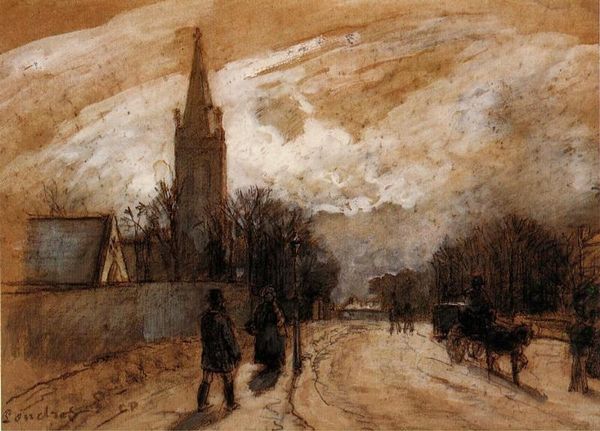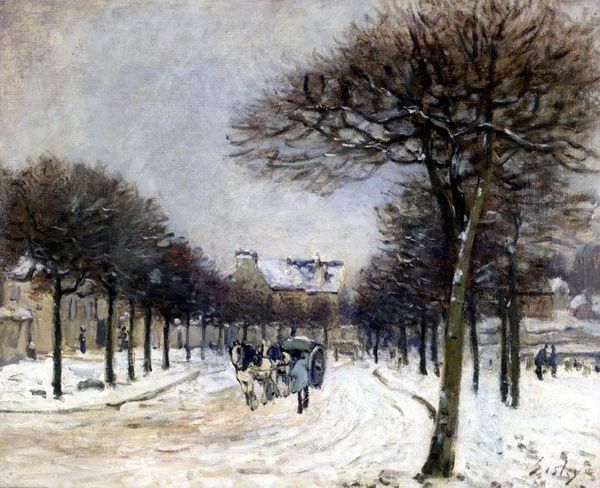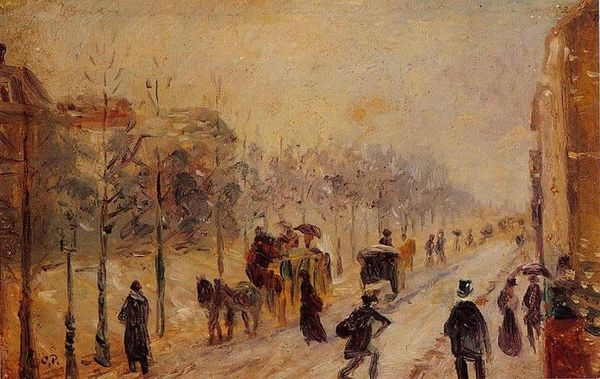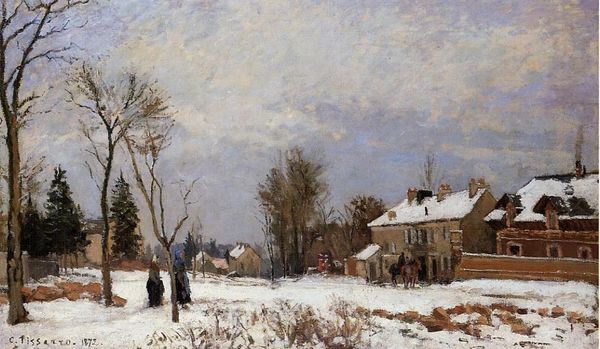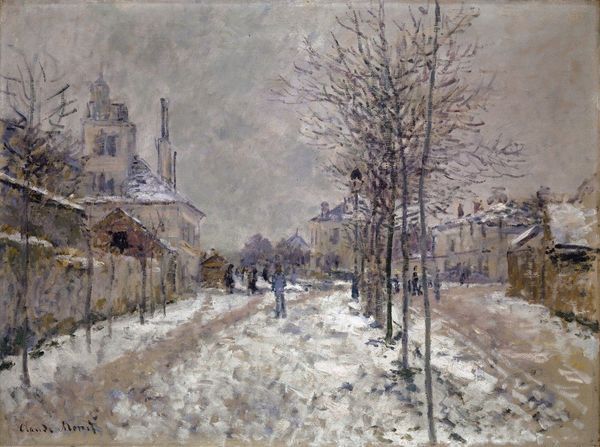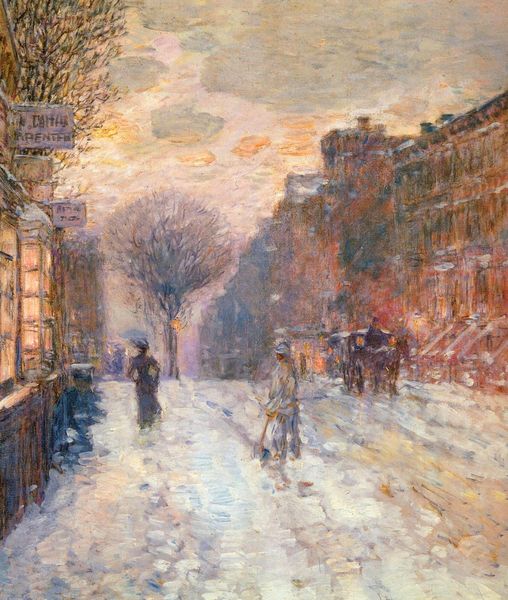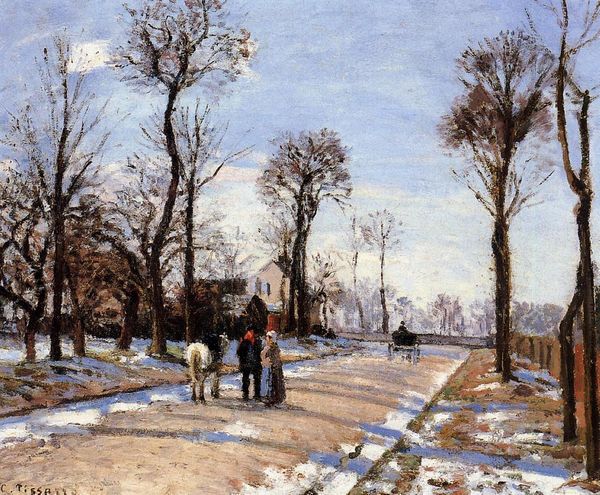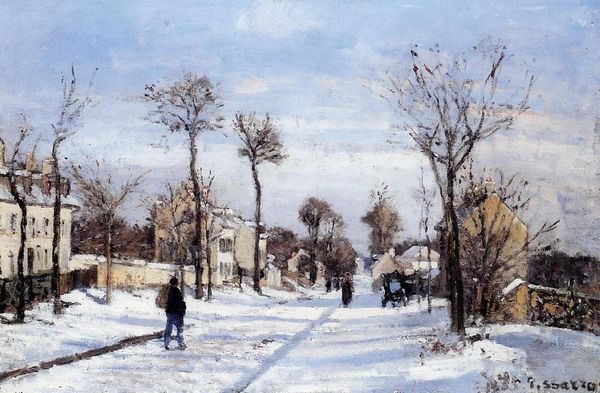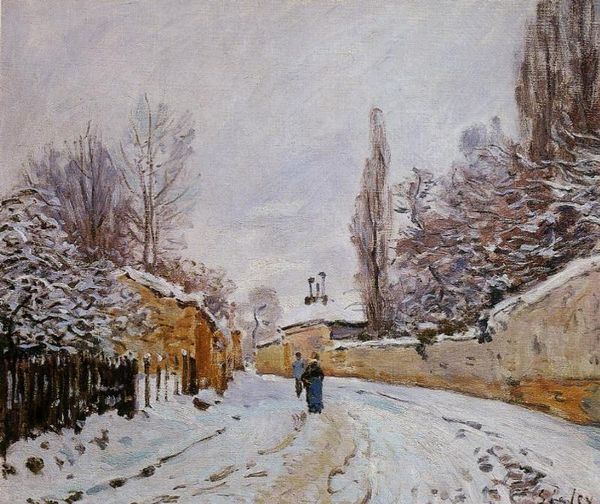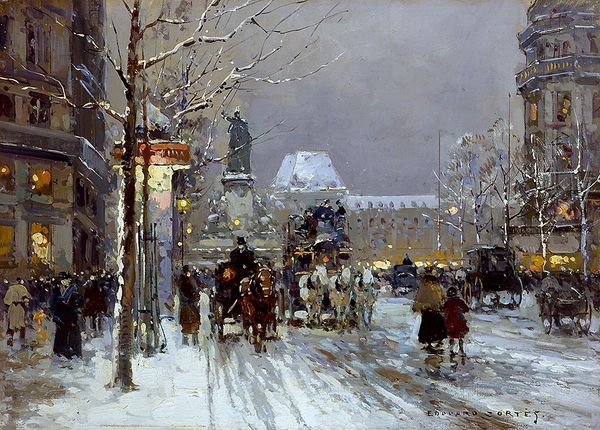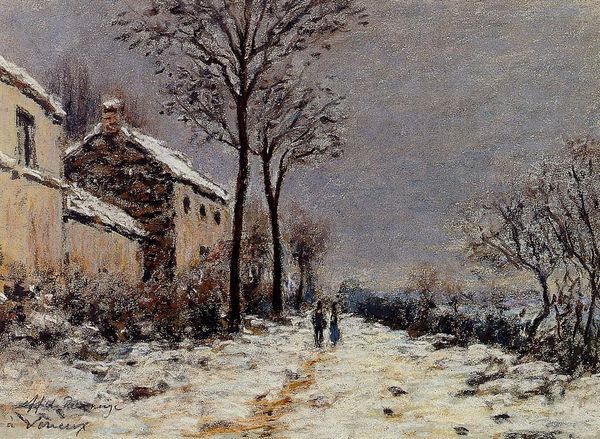
painting, plein-air, oil-paint
#
painting
#
impressionism
#
impressionist painting style
#
plein-air
#
oil-paint
#
landscape
#
impressionist landscape
#
oil painting
#
cityscape
#
genre-painting
Copyright: Public domain
"All Saints' Church, Upper Norwood," was made by Camille Pissarro, likely in the 1870s, using oil paint on canvas. Pissarro was a master of capturing light and atmosphere, and here, the texture of the paint itself becomes crucial. Look closely, and you'll notice how he applied the paint in short, broken strokes. This technique, typical of Impressionism, wasn't just about depicting what he saw; it was about the act of seeing itself. Each dab of paint is a record of his observation, his fleeting perception of light and shadow on a winter's day. The brushstrokes give the scene a sense of movement and vibrancy, as if the air itself is alive. Beyond the aesthetics, Pissarro’s process speaks to a shift in artistic values. Traditional academic painting prioritized smooth surfaces and illusionistic detail. Pissarro and his fellow Impressionists embraced a more direct, honest approach, celebrating the materiality of paint and the subjective experience of the artist. This move democratized the art making process, focusing on the ‘how’ as much as the ‘what,’ challenging established notions of what constituted ‘high art.’
Comments
No comments
Be the first to comment and join the conversation on the ultimate creative platform.

